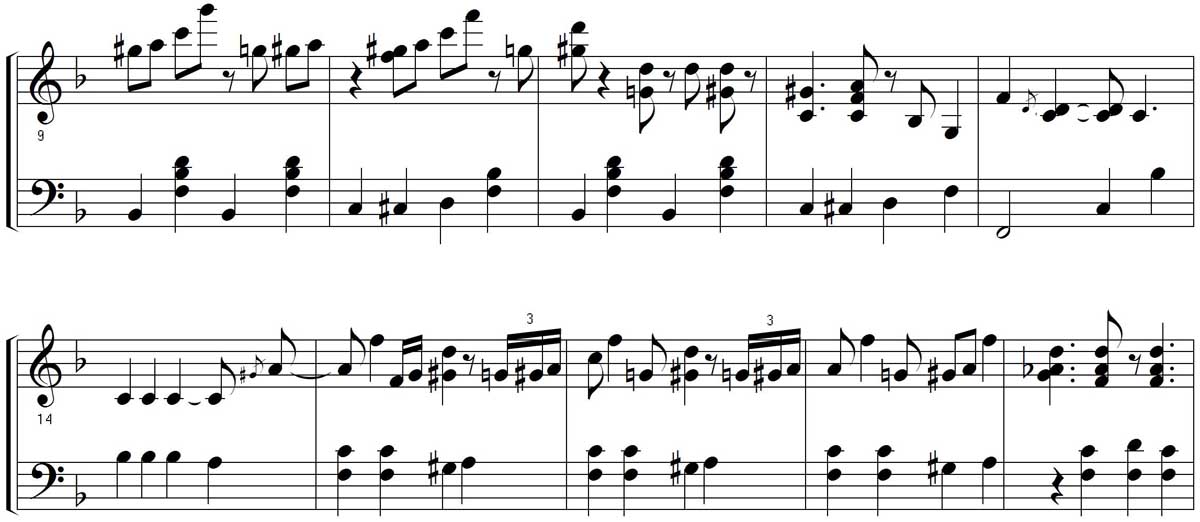Jabo Williams’s playing was slighted by Peter Silvester somewhat in A Left Hand Like God as being primitive, implying that his art was not quite fully developed. Silvester may have taken some flak for that comment as the second edition of his book, the main title changed to The Story of Boogie Woogie, praised Williams’s recordings as exciting and priceless. This is an artist about whom we know very little but is immortal to piano blues enthusiasts because of two very distinctive piano solos. Pratt City Blues and Jab’s Blues, while exhibiting a primal sort of energy, are far from primitive and have an especially advanced sense of harmony. Much like Montana Taylor, Jabo Williams liked to emphasize unusually dissonant note combinations. A frequent example is a combination of a minor second stacked with a tritone. Such a dissonant chord is not held in reserve, as might be expected, but actually kicks off the beginning of Jab Blues.

This chord is also found frequently in Pratt City Blues as a climactic element that travels to extremes in the treble range.

This harmony is certainly unusual in the context of the blues but does have a precedent in the playing of J. Lawrence Cook who uses the exact same grouping of G, A-flat, and D.

Curiously, these sorts of harmonies are largely absent from Jabo Williams’s vocal recordings, Kokomo Blues being the exception. His other vocal numbers are surprisingly unremarkable.
Another unusual harmony that Williams uses is an augmented triad at half cadences. Such chords are typically labeled as III+ or V#5, depending on how they are spelled. Both contain the leading tone and and function as a dominant.

This sort of harmony is occasionally found in other piano blues.

Jabo Williams’s accompaniments are also highly individual. Jab Blues has a constant interplay between a ragtime-derived bass and a pause in the accompaniment before starting the next phrase.

The accompaniment for Pratt City Blues resembles a more typical boogie woogie standing bass except that Williams throws in a rhythmic twist. Sometimes the downbeat is emphasized but at other times the emphasis is between the beats, with the lower note of the standing bass absent on beats one and/or three.

Jabo Williams’s recordings can be found on Boogie Woogie and Barrelhouse Piano Vol. 1 from Document Records. The sound quality on most of the tracks is not great because the source 78s are very rare. Williams’s piano solos can also be found separately in other collections.
Note: The recording of Pratt City Blues is in the key of F# major which is very unusual for blues and not very practical. Most likely the apparatus was not working properly when the track was recorded. If you compare the pitch at the beginning of the track with the ending it is apparent that the pitch has drifted just during the recording. (A good example of this is the two takes of Bessie Tucker’s Mean Old Jack Stropper Blues, both recorded August 10, 1928. Take 2 clearly in the key of G major while take 1 lies somewhere between G and F#. While the guitar on the recording could easily have been re-tuned, it is extremely unlikely that would happen to the piano.) Thus, the scores and audio examples of Pratt City Blues have been presented in the more likely key of F major, same as Jab Blues.